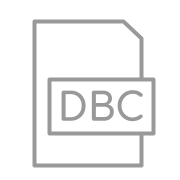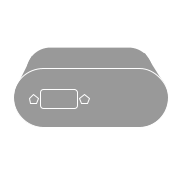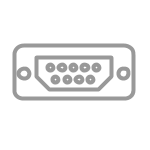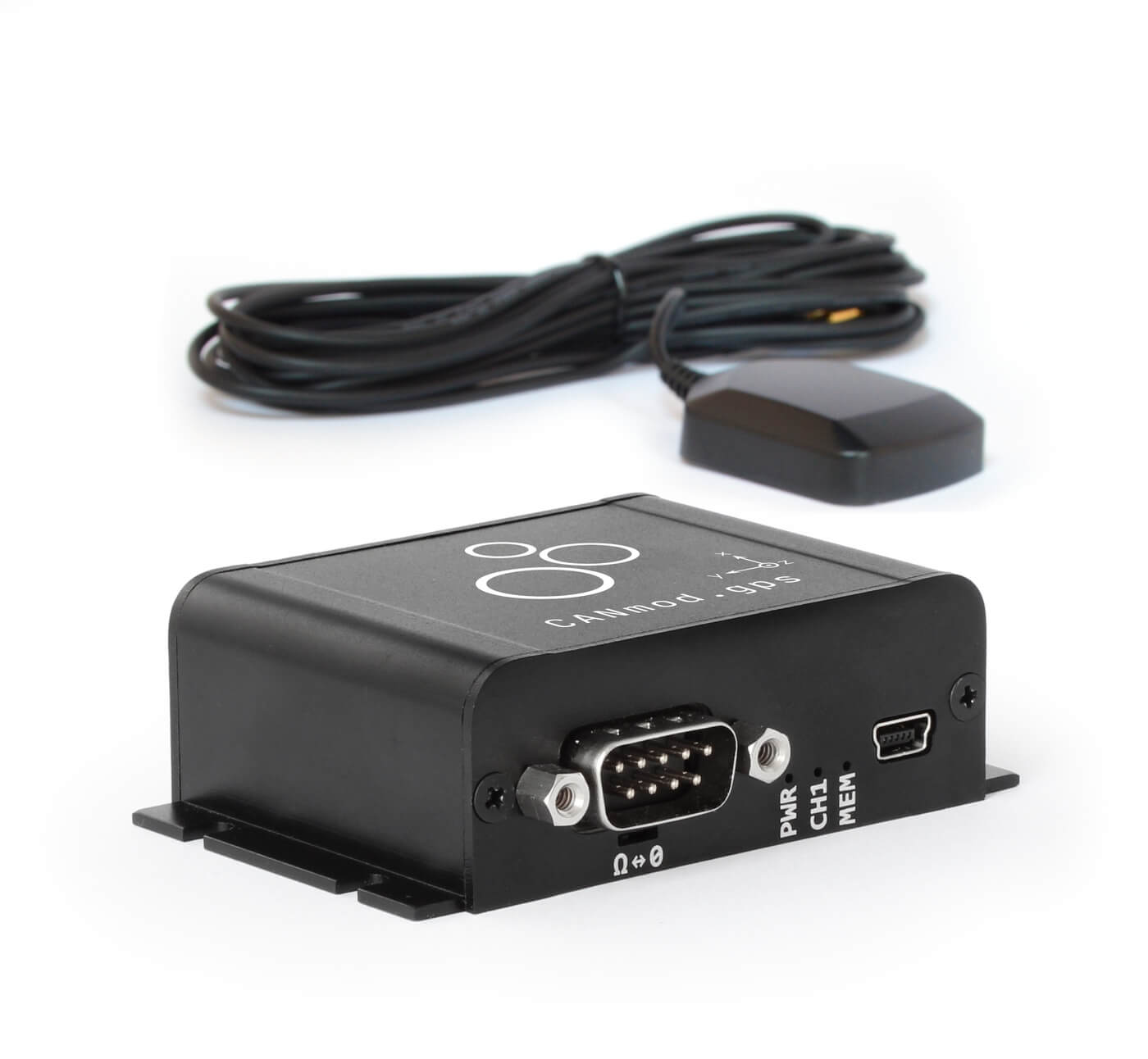
 PLUG & PLAY
PLUG & PLAY
Standalone - no PC required. Integrate with any CAN bus to add GNSS/IMU data. DBC included
 COMPACT
COMPACT
Only 7 x 2 x 5 CM. 70G. Alu enclosure. 4 LEDs. 5-26 V DC via DB9. USB for config/FW/stream
 USE GLOBALLY
USE GLOBALLY
1 Hz GNSS position. Hot start via battery backup. GPS, Galileo, BeiDou, GLONASS
 INERTIAL DATA
INERTIAL DATA
Built-in gyroscope (roll, pitch, yaw) and accelerometer (X, Y, Z). 100 Hz frequency
Position - enhanced by 'sensor fusion'
The module ouputs 1 Hz position and satellite status. It supports GPS/Galileo/BeiDou/GLONASS and uses sensor fusion to deliver high precision with UDR support (Untethered Dead Reckoning).

Speed
Speed data is useful in e.g. fleet telematics to identify speeding, idle time, asset utilization rates and more.

Altitude
Altitude can be a key parameter in e.g. the analysis of fuel/battery consumption in a vehicle - or e.g. in aerospace applications like drones, planes etc.

Attitude (roll, pitch, heading)
The CANmod.gps uses GNSS/IMU sensor fusion to provide attitude data, enabling a complete 3D picture of the asset orientation at any given time (for automotives).

Odometer (distance since power on and total)
Odometer data enables easy tracking of the distance travelled by the asset - both in total (since reset) and per trip (since last module power cycle).

3D IMU: Angular rate
The 100 Hz angular rate data can be used in e.g. the analysis of driving behavior and vehicle dynamics (tire/suspension, turning, drifting, ...).

3D IMU: Acceleration rate
The 100 Hz acceleration data can be used in e.g. analysis of road/driving quality (speed bumps, harsh braking, ...) and predictive maintenance.

Geofences
The module can output the status of configurable circular geofences at 1 Hz - useful for e.g. theft prevention, safety improvements, process automation and more

Timestamps (epoch date and time)
The CANmod.gps outputs a high precision epoch timestamp - useful in providing historical date/time for the GNSS/IMU data and e.g. syncing the internal time of connected CAN hardware.



Easily add GNSS/IMU data to any CAN bus system
The CANmod.gps makes it easy to add position and 3D inertial data to your CAN bus - e.g. for use by ECUs or CAN hardware.
- Compatible with any high speed CAN bus (2.0A, 2.0B)
- Fully configure CAN IDs, bit rate and message frequency
- Power at 5-26 V DC via standard DB9 adapter cables
- Optionally record the data via any CAN interface/logger/...
- Example: Use as add-on for the CANedge (power via 2nd port)
- DBC file included for easy decoding to human-readable form
- Optionally stream sensor data via USB in real-time
- White label e.g. for inclusion in your production
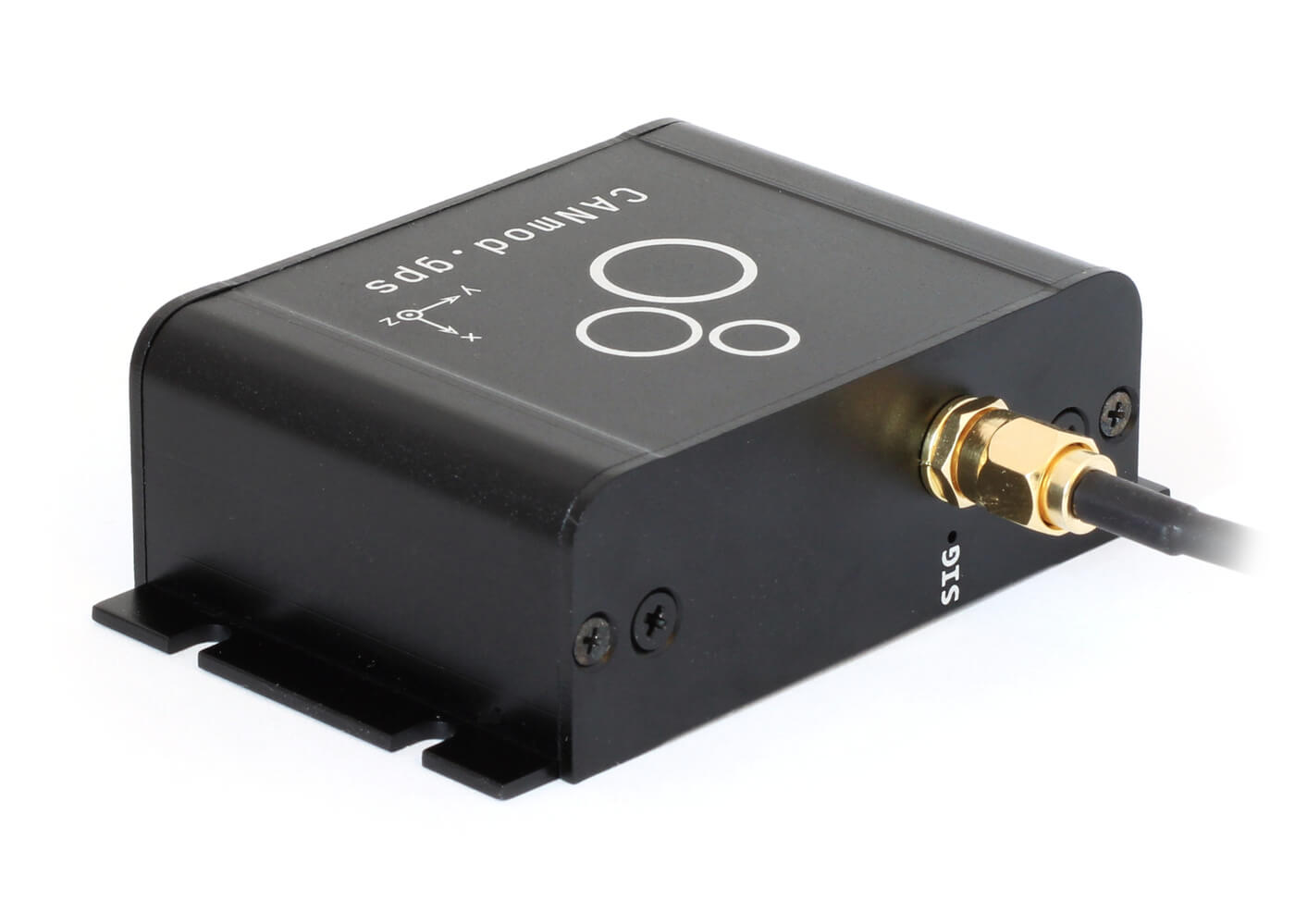
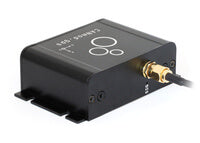
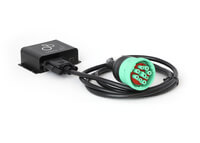
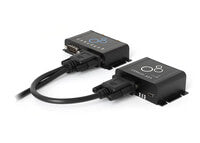
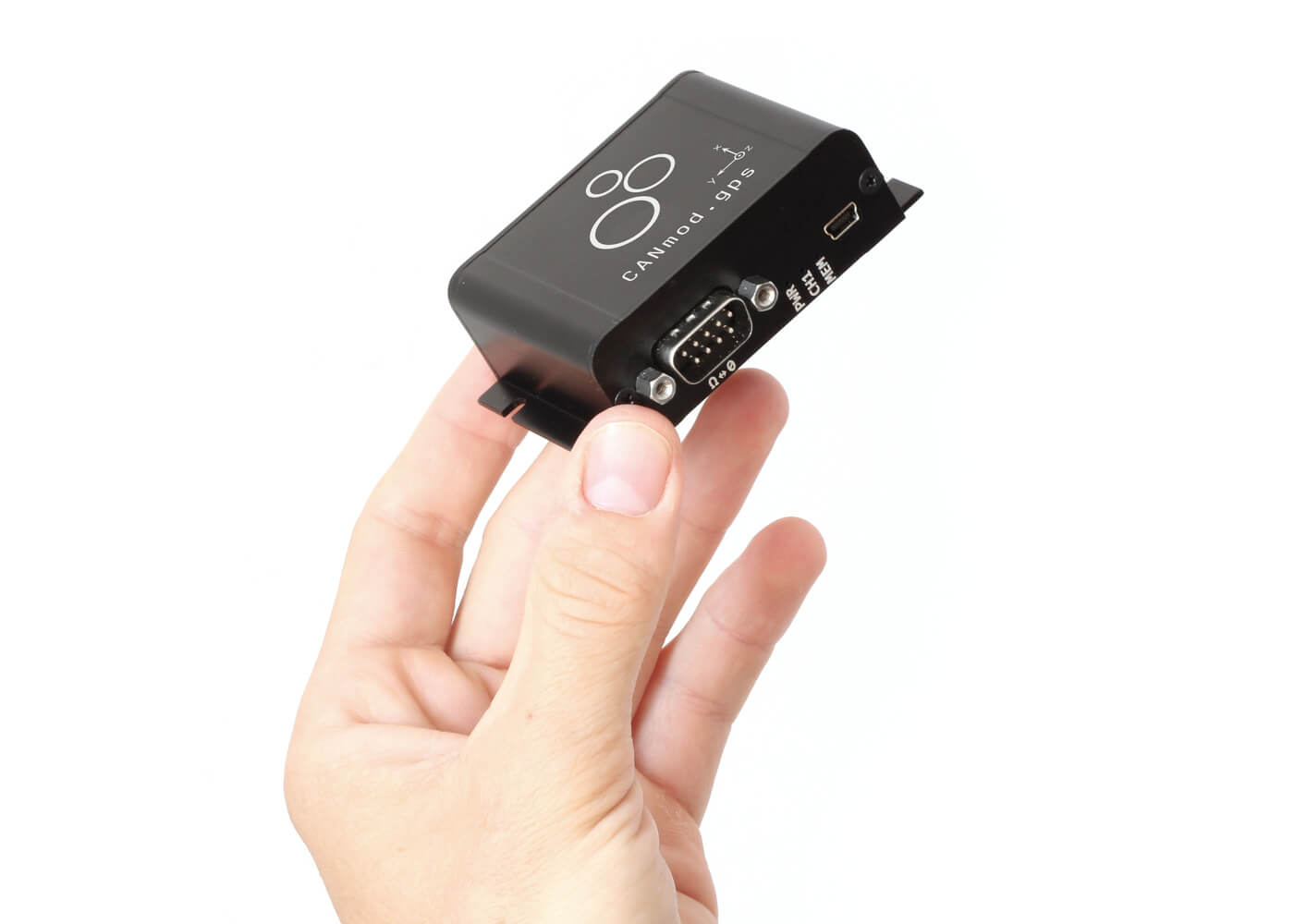

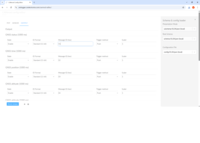
Example: Add GNSS/IMU data to your CANedge log files
Easily enhance your CANedge2 CAN/LIN data with GNSS/IMU information by connecting the CANmod.gps to the 2nd port.
Check out the online playground with OBD2 + GNSS/IMU data
- or learn more in our intro!
Alternatively, consider the CANedge incl. internal GNSS/IMU.
playground learn moreCheck out our tech specs, use cases or FAQ - or buy now!
Do you have any questions?
Contact us| GENERAL | |
|---|---|
| Functionality | The configurable device produces GNSS/IMU data and outputs it via CAN bus and/or USB |
| Included | CANmod.gps module, u-blox GPS antenna and USB dust cover (mini USB adapter not included) |
| Firmware | Supports free firmware updates via USB for adding features |
| Configuration | Configuration files based on the popular open source JSON schema concept (similar to the CANedge) |
| Software | Free open source editor tool for easy device configuration (offline/online version available) |
| Safety | CE, FCC, IC and RoHS certified (see the Docs for certificates) |
| Warranty | 1-year warranty |
| Support | Free, fast & high quality support |
| Origin | Denmark |
| SENSOR (GNSS/IMU) | |
| Module | Professional-grade u-blox NEO-M8U (72-channel) sensor with built-in gyroscope and accelerometer |
| GNSS | Supports (combinations of) GPS (USA), Galileo (Europe), BeiDou (China), GLONASS (Russia) |
| Geofences | Supports 0-4 configurable circular geofences (status sent via CAN bus) |
| Sensor Fusion (UDR) | Enhanced position precision via sensor fusion (UDR) of GNSS and 3D IMU (automotives only) |
| Acquisition | Cold starts: 26 s | Aided starts: 3 s | Reacquisition: 1 s |
| Sensitivity | Tracking/Navigation: 160 dBm | Cold starts: 148 dBm | Hot starts: 157 dBm |
| Battery Backup | The module has a battery backup to enable 'aided starts' (3 s) between power cycles |
| Accuracy | Position: 2.5 m CEP (Circular Error Probable) |
| Heading: 1 degree (50% at 30 m/s) | |
| Velocity: 0.05 m/s (50% at 30 m/s) | |
| DATA PARAMETERS | |
| CAN Signals | The module communicates several GNSS/IMU signals (for a full list, see the Docs or DBC file) |
| GNSS position: Longitude and latitude information [1 Hz] | |
| GNSS time: Precise GNSS based epoch timestamp [1 Hz] | |
| GNSS status: Fix type (NO/UDR/2D/3D/GNSS+UDR) and satellite count [1 Hz] | |
| GNSS speed: Travel speed in meters/second [1 Hz] | |
| GNSS altitude: Altitude information in meters [1 Hz] | |
| GNSS attitude/orientation: Roll, pitch, heading [1 Hz] | |
| GNSS odometer: Distance traveled (since power on and total) [1 Hz] | |
| 3D IMU: Gyroscope-based angular rate (X, Y, Z) and accelerometer-based acceleration (X, Y, Z) [100 Hz] | |
| Geofences: Status of the configured geofences [1 Hz] | |
| CAN BUS | |
| Channels | 1 x CAN channel |
| Modes | The device can either broadcast the data onto the CAN bus - or provide it on-request |
| Standard | ISO 11898: Compliant with CAN (up to 1 Mbit/s) |
| Identifiers | Compliant with CAN specifications 2.0A (11-Bit ID) and 2.0B (29-Bit ID) |
| Termination | Termination can be toggled via switch below DB9 connector |
| Retransmission | Retransmission of frames that have lost arbitration or been disturbed by errors |
| Transceiver Protection | Protection: +/- 25kV HBM ESD, +/-12kV IEC ESD, +/-14 V bus fault, short circuit |
| Common mode input voltage: +/-12V | |
| TXD dominant timeout (prevents network blocking in the event of a failure) | |
| CONFIGURATION | |
| Bit Rate | Select between standard bit rates (5K to 1M) or use custom bit-timing |
| Enable/Disable | Individually enable/disable each CAN message |
| Identifier Customization | Individually configure CAN IDs for all messages (11-bit or 29-bit) |
| Push/Poll Mode | Individually configure 'trigger' modes for all messages (push or poll) |
| Frequency | Individually configure prescaling of the default message frequencies to lower rates |
| IMU Correction | Optionally compensate the orientation of the module as part of the IMU configuration |
| ELECTRICAL | |
| Input Supply | +5V to +26V DC via the DB9 connector (power via pin 1 or pin 9) |
| Alternatively power via USB (for updating firmware/config or for streaming data in real-time) | |
| Power Consumption | Extremely low (<1W) - no risk of battery drainage |
| Protection | Reverse voltage protection on CAN-bus supply |
| Transient voltage event protection on supply lines | |
| MECHANICAL | |
| Enclosure & Weight | Compact aluminium enclosure: 65 x 48 x 24 mm (W x L x H excl. flanges & connectors). 70 grams |
| Connector | 1 x Standard D-sub 9 (DB9) connector |
| Pin-Out | See the product manual for the DB9 connector pin-outs |
| USB | Standard mini USB connector for config/firmware updates and streaming (USB cable not included) |
| LEDs | Module status via 4 external LEDs: Power, CAN bus, Memory, GNSS |
| Temperature | Operating temperature (parts): -25degC to +70degC |
| IP Rating | IP Rating 40 |
| Mounting | Module can be mounted via e.g. rugged double-sided tape, zip-ties or a mounting bracket |
| GPS antenna | GPS antenna included (SMA plug, 3 m cable, magnetic base) |
The CANmod.gps can be installed standalone in any CAN bus system - including e.g. as an add-on for the CANedge.

Add GNSS/IMU data to your CAN bus
Need to inject GNSS/IMU data directly into your CAN bus?
The GPS-to-CAN module can be used standalone to inject CAN frames with GNSS/IMU into your CAN bus system. The data can be consumed by other CAN nodes on the network - e.g. ECUs, cabin displays, CAN loggers or telematics control units (TCU). To ensure compatibility, you can modify bit rate and CAN IDs via the simple config editor.
CAN + GNSS/IMU data & WiFi telematics
Need to collect vehicle CAN bus and GNSS/IMU data via WiFi?
The CANmod.gps can be deployed as an 'add-on' module for the CANedge. Simply configure the CANedge to provide a 5V power out via the 2nd port - and connect the CANmod.gps via the optional adapter cable. This lets you log e.g. vehicle CAN bus data via channel 1 and time-synced GNSS/IMU data via channel 2. This is ideal for e.g. heavy-duty fleet telematics where data is auto-pushed to your own server when the vehicle is in range of a WiFi access point. Note: See also our CANedge incl. GNSS/IMU for this use case.


On-road telematics with CAN + GNSS/IMU data
Need to upload CAN bus and GNSS/IMU data via 3G/4G?
The CANedge2 can upload data while on-the-road using e.g. a 3G/4G USB router. You can power the 3G/4G hotspot from the vehicle - or use our DB9-DB9/USB adapter to power both the hotspot and CANmod.gps via the 2nd port of the CANedge2. The uploaded log files can e.g. be visualized in telematics dashboards. Ideal for e.g. OEM field testing, car fleet telematics, predictive maintenance and more.
Note: We now recommend our CANedge3 with 3G/4G and GPS/IMU for this use case.

Geofence-based vehicle control
Need to control vehicle behavior via CAN bus geofences?
You can configure circular geofences and broadcast the status via the CAN bus - e.g. to geo-control vehicle behavior:
- Eliminate theft: Disable/slow-down vehicle if outside geofence
- Reduce costs: Geo-toggle power/fuel saving modes
- Increase safety: Disable vehicle/dangerous parts in key areas
- Automate: Remove manual processes for consistency
- Display: Visualize geo-alerts via in-cabin dashboard displays
The CANmod.gps is a small device that contains a u-blox NEO-M8U GNSS/IMU module. It produces sensor information like position, speed, acceleration etc. - and outputs this data as CAN frames via the DB9 connector.
The GPS-to-CAN module can be integrated with any high speed CAN bus system (2.0A, 2.0B) due to the fully configurable bit rates and CAN IDs. Further, it can be powered flexibly from 5-26 V DC, making the installation and wiring very simple for the vast majority of automotive applications.
When used as a standalone device, the GNSS position and inertial sensor data is simply broadcast onto the CAN bus along with the existing CAN traffic. This means that any existing CAN nodes (e.g. ECUs) and CAN hardware (e.g. CAN displays, CAN loggers, CAN interfaces, CAN telematics units) can record the GNSS/IMU data along with the existing CAN bus traffic. It also means that e.g. OEMs can use data from the CANmod.gps (e.g. geofence statuses) to trigger certain behavior in select ECUs.
As an example, the CANmod.gps can be used as an add-on for the CANedge CAN bus data logger. In this setup, the CAN bus data from the CANmod.gps is recorded just like data from any other CAN network. To ease installation, the CANedge can enable a '5V power out' on the 2nd port. This means you can easily connect and power the CANmod.gps via the 2nd port. In this setup, the CANedge can log data from e.g. a vehicle via the 1st port and log timesynced GNSS/IMU data from the CANmod.gps via the 2nd port - storing both data sources in the same log file.
We offer a number of useful adapter cables as options for the CANmod.gps:
DB9-DB9/DB9 (Y splitter): This lets you connect one or more modules to the 2nd port of the CANedge - ideal if you e.g. need to log data from both a CANmod.gps and a CANmod.temp temperature sensor module.
This adapter can also be used if you wish to connect both the CANmod.gps and e.g. a CANedge to the same CAN bus - e.g. for enabling the logging of 2 CAN channels with the CANedge in parallel with logging the GNSS/IMU data.
Other adapters: You can use any of our standard DB9 adapter cables with the CANmod.gps when using it in standalone mode - thus powering the device via a 5-26 V power supply and sending CAN data directly into your CAN application.
If you wish to add GNSS/IMU data to your CAN bus system or your CAN bus data log files (e.g. via the CANedge), the CANmod.gps is by far the simplest and lowest cost solution. The module is designed around the same concepts as the CANedge: Simple-to-use, professional-grade specs and interoperability.
The module is also extremely price competitive vs. alternatives on the market, making it a great choice for e.g. standalone use cases where you need to add GNSS/IMU data for consumption by other CAN hardware. The device can be easily configured for compatibility with any CAN bus system - and due to the compact size, it can be easily installed in practically any CAN based application. Further, the DBC file ensures that decoding the CAN bus data is easily done in practically any CAN bus software tool.
The installation of the CANmod.gps depends on your use case - for full details, please refer to the CANmod.gps documentation.
The CANmod series can be used as a plug & play extension of the CANedge CAN bus data logger. A popular way of using the module is to power it via the 2nd port of the CANedge - enabling easy logging of sensor data on channel 2, timesynced with CAN bus data from your main CAN application via channel 1.
However, you can now select the CANedge in a variant incl. internal GNSS/IMU. This is a far more compact and low cost solution for adding GNSS/IMU to your CANedge data and we thus recommend this going forward. If you need to add GNSS/IMU to an existing CANedge that does not have internal GNSS/IMU, however, the CANmod.gps is ideal.
To use the CANmod with a CANedge, follow the below steps:
- In the CANedge Configuration File, enable the 2nd port 'power out'
- Set the CANedge bit rate on CAN CH2 to match the CANmod (default 250k)
- On the CANmod, enable the 120 ohm CAN termination via the switch below the DB9
- Use a suitable adapter cable to connect the CANmod to the 2nd port of the CANedge (e.g. our DB9-DB9/DB9 adapter)
You can of course also simply connect the CANmod to your main CAN bus network (e.g. powering it directly from the vehicle/machine power supply at 7-26V). In this case, the CANedge can be connected to the same network, allowing it to record the CANmod sensor data along with the regular CAN traffic.
For an illustration of this, we recommend to check out our webinar video, in which we showcase the effect.
The CANmod.gps uses the powerful u-blox NEO M8U chip for professional-grade precision via sensor fusion.
This feature combines the GNSS position with 3D inertial sensor data to provide 'Untethered Dead Reckoning' (UDR) - resulting in far more precise positioning in GNSS-hostile areas (tunnels, cold starts, ...). Positioning starts as soon as power is applied to the module - before the first GNSS fix is available.
To benefit from the added precision, the module needs to be installed adequately within a car, truck, tractor or similar automotive (see the documentation). The module can also be used without sensor fusion enabled in case it is e.g. installed in other applications (ships, motorcycles etc).
Yes. The GPS-to-CAN module is not "locked" to our CAN bus data loggers. Rather, the GNSS/IMU data is communicated via standard high speed CAN bus (ISO 11898), meaning any CAN logger or CAN interface can record the raw data.
For example, you can use a DB9-J1939 or DB9-OBD2 adapter to connect the CANmod.gps to a truck or a car. The module is powered via the adapter and will broadcast data directly into the vehicle CAN bus. In such a setup, you can then connect any CAN logger/interface to the same CAN bus to log both the vehicle and GNSS/IMU data.
Alternatively, you could connect a CAN bus interface to the CANmod.gps in isolation to simply log the GNSS/IMU data - providing power e.g. via an external battery or power supply.
When we refer to the CANmod.gps as an 'add-on' for the CANedge, it is because the CANedge can provide power for the CANmod.gps module via the CANedge 2nd port - which simplifies the installation. A typical use case is to connect the CANedge (via channel 1) to a vehicle CAN bus - and then connect the CANmod.gps to the CANedge channel 2 to add GNSS/IMU data to the same log file. This can be deployed in 100% 'silent mode', with no interefence on the vehicle CAN bus. You also do not have to worry about ensuring compatibility with the vehicle bit rate or CAN IDs as the CANmod.gps data only enters the CANedge.
No, the CANmod.gps is not a CAN logger or able to e.g. push data to a server. For such a use case, you would combine the CANmod.gps with e.g. a CANedge2. The CAN logger then serves as the platform for recording the GNSS/IMU data being output by the CANmod.gps.
Do you have any questions?
Contact us



